We’re living in the digital age, so of course, every imaginable lesson is stashed somewhere online. Unfortunately, so is every possible distraction waiting to ensnare you.
So, what’s the answer? Books. Good old-fashioned paper and ink. With a modern music theory book, you’re not going to end up doomscrolling YouTube, nor are you going to end up checking your bank account or falling victim to any of those other distractions.
In this KillerGuitarRigs Review, we’ve selected some of the best guitar theory books on the market. They skip over the guitar basics featured in more general guitar books, and explain the subject, how it is relevant to the guitar, and use charts and/or diagrams to tie it to the fretboard and help you improve your guitar playing.
If you’re looking for a great way to improve your music theory knowledge, you won’t want to miss this!
Read more about our review process.
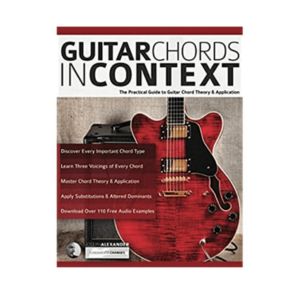
Guitar Chords in Context
Features: 3 Voicings for every chord, 110+ Downloadable audio examples, Chord substitutions
Benefits: Easy to read, Great explanations, Fits into gig bag pocket
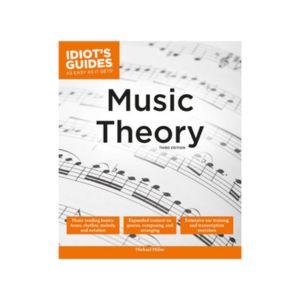
Music Theory
Features: Ear training exercises, Composing/arrangement guidance, Music reading basics
Benefits: Simple wording, Helpful reference appendixes, Suitable for beginners
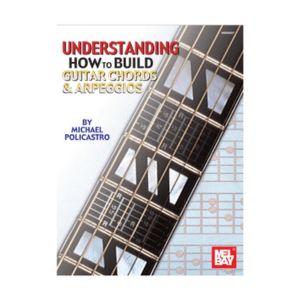
Understanding How to Build Guitar Chords & Arpeggios
Features: Clear illustrations, Knowledge checks, 224 Pages
Benefits: Super practical, Easy to follow, Packed with helpful tips
Contents
Our Top 3
The Idiot’s Guide to Music Theory is our Top Pick for beginners, hobbyists, and younger students. While the name may seem haughty, the book itself doesn’t talk down to the reader – nor does it handle you with kid gloves. It’s simple yet comprehensive, informational yet to the point. Young students will see rapid and effective improvements in their knowledge and guitar playing as they progress through it.
Understanding How to Build Guitar Chords and Arpeggios is an excellent resource for the intermediate guitarist. It features accessible instructions on how to navigate the fretboard using arpeggios and patterns. It acquaints you with all the modern music theory essentials and gives you solid exercises to apply them practically. When you are done studying it, it will improve your solos and color your vocabulary.
Guitar Chords in Context is one of the best music theory trilogies for intermediate or advanced guitar students. Each book is an unraveling of chords and harmony, culminating in the art of voice leading using chords. It’s succinct, but it packs heaps of information. Use it bit by bit, and you’ll be well on your way to admirable skill.
Individual Reviews
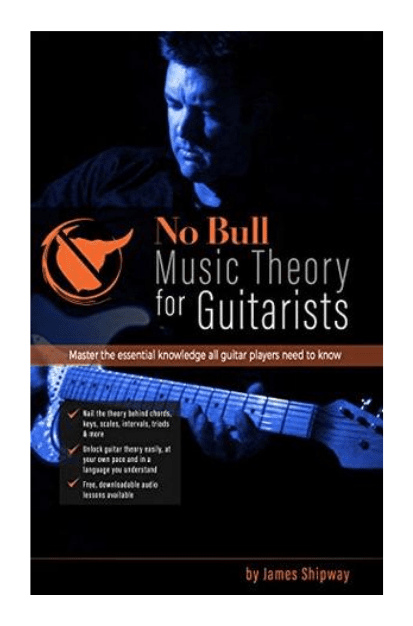
No Bull Music Theory for Guitarists
A simple guide for beginners to start grasping concepts early.
This book takes the fundamentals of guitar theory and explains them in a way that beginners can understand, and more experienced players will relate to. Each concept is properly explained, and it even includes exercises to ensure comprehension before moving on.
Available in Paperback and Kindle format
- Author: James Shipway
- Publisher: Independently Published
- Pages: 107
- Level: Beginner
- Sight Reading: Not Required
We thought that No Bull Music Theory would be a great choice for those who enjoy informal and conversational instruction thanks to its simple and unpretentious approach to music theory.
After spending some time reading it, we found that it helped us to make sense of triads, scales, intervals, and all the other rudimentary concepts of modern music theory. The book covered major and minor scales but didn’t venture into modes. For that reason, it’s recommended for novices and may not have adequate music theory content for intermediate guitarists.
All 12 chapters included an introduction and explanation of the topic at hand and a quiz with an answer sheet, something that we thought was a great way to establish whether we’d actually retained the information. Each chapter concluded with a number of exercises to consolidate each guitar theory concept before we moved on. The author also provided free audio files to supplement this book on his website – a really nice touch, in our opinion.
The early chapters were super simple, but they compounded in complexity as we approached the latter half. Despite that, the book still reconciled modern music theory with practical ways to use it when you play guitar. We thought that the use of chord diagrams and modern tabs made it an excellent resource for players (like us), who can’t sight-read.
Verdict: Whether you are starting late or are a casual hobbyist, this book will walk you through all the fundamental concepts of music theory. Plus, it will appeal to passionate guitarists who want to learn music theory but don’t want to learn how to read/write music. Overall, No Bull Music Theory for Guitarists is a straight shooter. If that’s your style, it’s already one of the bestselling books in the segment.
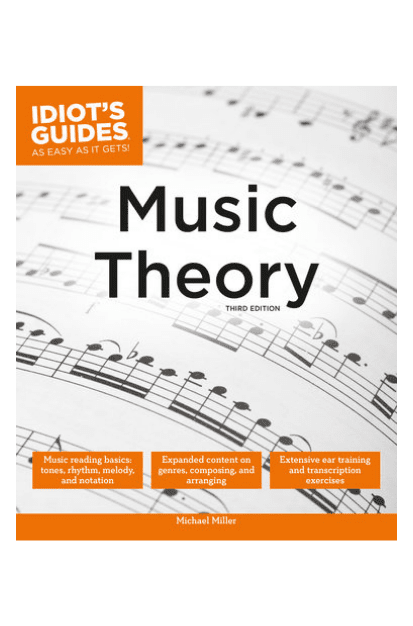
The Idiot's Guide to Music Theory
A humorous take on an otherwise serious subject.
If you see yourself as a total beginner, and you have no desire to learn theory the traditional way, this title is for you. It doesn't rely on any prior knowledge of theory, and offers some excellent information to help you quickly advance.
Available in Paperback and eTextbook format.
- Author: Michael Miller
- Publisher: Alpha
- Pages: 386
- Level: Beginner
- Sight Reading: Not Required
The Idiot’s Guide is a meat and potatoes version for beginner-to-intermediate guitarists and musicians. It presents the basic music theory concepts such as tones, intervals, scales, rhythm, and composing/arranging in easy-to-follow, bite-size chunks.
We thought it was very much aimed at budding musicians with little experience of sight reading and modern music theory. Alpha publishing have been creating such guides for nearly three decades, and we thought that this was plain to see in the clear-cut structure and easy-to-navigate sub-sections.
More importantly, we were really impressed by how palatable it made music theory – especially for those who aren’t all that into it but want to learn to improve their overall musicianship. A lot of beginners find themselves overwhelmed by theory and sight reading, but the Idiot’s Guide to Music Theory really avoided overcomplication and was really easy to follow. It laid out the concepts gradually with chapter summaries and exercises, too.
As we made our way through the book, we found that it included a huge range of important music theory topics like ear training, writing sheet music, as well as some tips and tricks on how to develop interesting harmonies and counterpoints. The book concluded with a chapter on how to use chord substitutions and turnarounds.
The easy-to-follow format and reference appendix ensured that we never get lost or bored. Each chapter also included a list of dos and don’ts before it encouraged us to put our stamp on the guitar theory we’d already absorbed.
Verdict: The Idiot’s Guide to Music Theory is a welcoming book for new students. It’s a great non-academic resource for anyone who wants to start from scratch. It will walk you through the fundamentals and teach you how to read and write music. As evident, it won’t appease anyone who already possesses those skills.
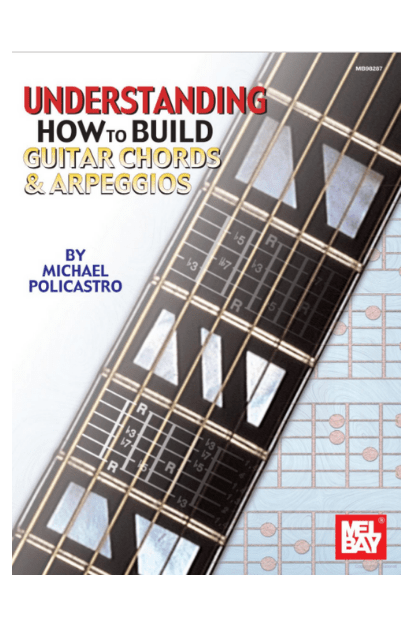
Understanding How to Build Guitar Chords and Arpeggios
A great choice for the advancing beginner to intermediate guitarist.
When you get to the point of your guitar playing at which you no longer just want to learn songs from chords and tabs online, but you actually want to start writing songs and understand how to structure progressions, this book will help a lot. It has some great exercises, and easy to understand pictures and diagrams to help the visual learner grsp the concepts quickly.
Available in Paperback and Kindle format
- Author: Michael Policastro
- Publisher: Mel Bay
- Pages: 232
- Level: Beginner-to-intermediate
- Sight Reading: Not Required
Understanding How to Build Chords & Arpeggios is a 230+ page resource to acquire a solid foundation of chords, chord tones, and arpeggios.
The first half of the book addressed chord and arpeggio construction, focusing on major/minor chords with chord inversions. It moved on to the 7th, 9th, 11th, and 13th chords. Subsequent sections covered more detailed music theory topics like sus chords, altered chords, and added tones – all of which we thought were described in an easy-to-digest way.
The fourth chapter covered essential fingerboard patterns. It included unison, intervallic, and octave patterns with horizontal and vertical transposition. The last two chapters ventured into more advanced concepts like quartal, compound, and polychords. The author also touched upon string groupings, chord families, and triton chord relationships.
Each section had a set of ‘test yourself’ questions with an answer sheet afterward, all of which were a nice way to consolidate learnings to date. The exercises helped us to build key guitar theory skills to start using arpeggios as accompaniment and solos. The book also featured add-ons like chord diagrams, arpeggio patterns, scale patterns, and chord maps.
Verdict: Overall, Understanding How To Build Chords & Arpeggios is a comprehensive book with clearly presented ideas that are easy to learn and apply. It will benefit beginner and intermediate-level guitar players. It will acquaint you with all shapes and stretchy fingerings with a clear layout of the guitar fretboard. Either way, you’ll be playing arpeggios all over the fretboard by the end of this one.

Guitar Chords in Context
This book offers a solid game plan to quickly develop your playing.
This book is ideal for players at the intermediate to advanced level who want to understand more about how chords work in songwriting, an essential skill for those who take their music seriously.
Available in Paperback and Kindle format
- Author: Joseph Alexander
- Publisher: Fundamental Changes, 2nd Edition
- Pages: 111
- Level: Intermediate-to-advanced
- Sight Reading: Required
Everyone who learns to play guitar starts with open chords and power chords. Some make it to barre chords, and only a handful go beyond it and actually study music theory. Our reliance on 5th and 6th string roots is a handicap in our guitar playing, depriving us of the flexibility to navigate a chord progression in interesting ways. The Guitar Chords in Context Series is an answer to that.
Guitar Chords in Context was comprised of three theory books, each focusing on a gradual ascent to chord mastery. The first book in the series dealt with chord construction, the theory behind it, and practical applications.
Building on that foundation, the second book – Jazz Guitar Chord Mastery – added another layer of chords, shifting focus on drop two and drop four voicing with inversions. It finally concluded with Voice Leading Jazz Guitar, the last installment in the series that deals with voice leading.
Several books approach these topics with incessant and mind-numbing chord charts – however, we thought that Joseph Alexander’s practical approach was a real breath of fresh air. He outlined the theory of each chord type, which really helped us to understand chord families with roots on different strings.
We loved the 100+ notated audio examples to demonstrate the correct way to play the exercises and backing tracks to jam over while we learned to apply the newly acquired guitar theory concepts.
For better or worse, this series is aimed at intermediate guitarists with a reasonable level of formal instruction under their belts. If you’re a mid-level player, and you’ve been self-taught to this point without any kind of guitar or music theory training, we think that you probably won’t be able to truly appreciate this book. It relied heavily on theory, so we’d recommend that casual students and rock guitar players look elsewhere.
Verdict: Guitar Chords in Context is a rich resource to learn music theory and the whole gamut of guitar chord applications. It focuses on chord construction, substitutions, extensions, and chromatic alterations. It gradually moves to drop voicing and inversions and concludes with voice-leading essentials. In the right hands, it will revolutionize your approach to rhythm and comping.
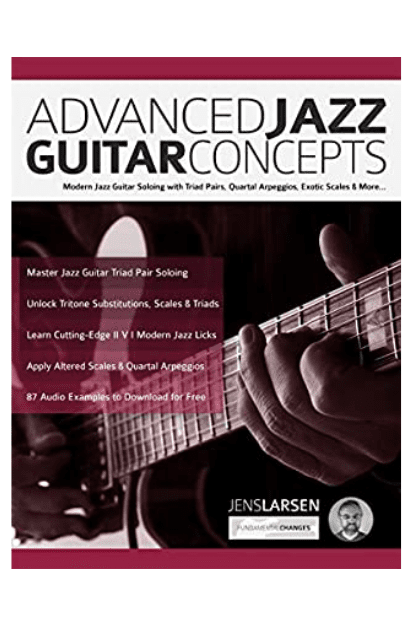
Advanced Jazz Guitar Concepts
An easily digestible approach to a difficult topic.
Jazz concepts can be incredibly intimidating, even for advanced players, and while this book isn't really aimed at beginners, it does provide some great breakdowns that really help the reader to absorb difficult information with relative ease.
Available in Paperback and Kindle format.
- Author: Jens Larsen and Joseph Alexander
- Publisher: Fundamental Changes, 2nd Edition
- Pages: 76
- Level: Intermediate-to-advanced
- Sight Reading: Required
Advanced Jazz Guitar Concepts is co-authored by Jens Larsen and Joseph Alexander – two formidable jazz musicians and instructors. We’ve picked this particular book because it focuses on key elements of jazz music theory, such as triad-based soloing, tritone substitutions, and ii-V-I passing.
Overall, we thought that this book was similar to The Jazz Theory Book and 20th Century Harmony, but with a more practical approach and a slimmed-down format.
Some of you may know the author, Jens Larsen, from YouTube – one of the best-known instructors in the jazz guitar segment. In terms of content, this book had it in spades. It featured advanced topics like quartal arpeggios, leaping intervals to create interesting solos, triads/arpeggios to ginger up phrasing, and much more. We particularly enjoyed the material on tritone substitution and how to use altered and augmented scales.
The explanation went into the requisite depth without getting us too deep into the weeds on any one topic. Usually, jazz-related music theory instruction uses staff notation, but we found this book to be more considerate than the average, as it included guitar tabs for people who cannot read sheet music. This is one of the few available resources for self-taught musicians or students who don’t have any sight reading skills, and that alone makes it a solid choice for budding jazz players to learn music theory.
Verdict: Regardless of your predilection to jazz, Advanced Jazz Guitar Concepts is a worthy addition to any bookshelf. The size isn’t daunting. The language is unpretentious. Considering how difficult jazz music theory can be, this content is easy to digest, and you’ll start noticing instantaneous improvements in your playing as you get through the chapters. If you enjoy it, there are eight more books in the series to master.
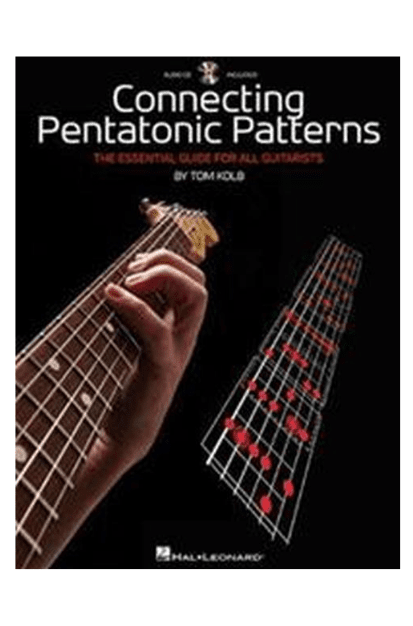
Connecting Pentatonic Patterns
A must read for players looking to expand their use of the pentatonic scale.
While the pentatonic scale may be the butt of a lot of jokes, having a proper understanding of how to use it and connect its patterns can assist in rapidly improving your skills. This book gives some great tips on the use of these scales in practical, easy to adopt terms, and is suitable for players of all skill levels.
Available in Paperback and Kindle format.
- Author: Tom Kolb
- Publisher: Hal Leonard
- Pages: 250
- Level: Beginner-to-intemediate
- Sight Reading: Not Required
The pentatonic scale is inescapable, regardless of the genre. Tom Kolb takes the ground-up approach to teach you how to use the five patterns to create memorable solos.
The only music theory prerequisite for understanding this book and truly getting the most out of it is understanding (and being able to play) the five pentatonic patterns. Once you’ve got that down, the book starts with basic applications and advances to different ways to combine two or more patterns.
The chapters were interspersed with improvisational concepts, soloing techniques, and bags of licks and exercises. Kolb also added a brief recap of music theory in each chapter and tone tips – amp settings, effects – for the solo sections. It’s tips like these that we think really make books relatable and ultimately more likely to be used.
The book spent a lot of time addressing major and minor pentatonic scales and also threw light on how to mix or combine them – an absolute essential in blues and rock music. The book concluded with some jam tracks, scale recommendations, and some great ideas on how to improvise with our newfound fretboard freedom. Once you’ve covered these techniques, you might want to check out our list of the best easy blues songs on guitar!
Verdict: Connecting Pentatonic Patterns is a practical music theory resource that will keep you busy for weeks. The credit for it goes to Kolb, a gifted instructor who can break down musical ideas to the benefit of his readers. Unless you’ve got B. B. King’s mojo, you’ll have to figure out how to traverse the neck and back using major/minor shapes and patterns. That’s exactly what this hands-on book is for.
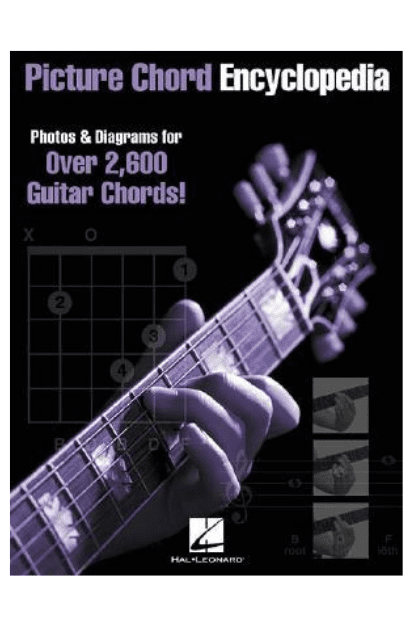
Picture Chord Encylopedia
The ultimate guide to chord structures for guitarists of all levels.
A picture guide to chords like this should be in every guitarists library. It offers easy to understand pictorals of over 2600 chord voicings, giving you quick access to almost every chord you'll ever need.
Available in Paperback and Kindle format.
- Author: Hal Leonard Corp.
- Publisher: Hal Leonard
- Pages: 274
- Level: Everyone
- Sight Reading: Not Required
Hal Leonard’s chord encyclopedia features 44 chords with five voicings – five different locations on the neck – in all the twelve keys; that’s a whopping 2600+ chords in one illustrated book.
This book wasn’t a music theory for guitarists book per se. The first section had a basic explanation of modern music theory and how it relates to the guitar fretboard, but the primary purpose of this book is to serve as a reference.
The chords were arranged alphabetically and included power chords, barre chords, broken-set chords, and partial chords. Each chord was accompanied by a clear photograph of the fretting hand playing the chord on a guitar.
The book also provided staff notes for the chords and a guitar tab/chord diagram with numbered fingerings. It’s available in two sizes – we covered the larger version, and we’d highly recommend opting for this one (the 9” x 12”) as it’s much easier to read at a glance.
Verdict: The Picture Chord Encyclopedia is a highly recommended addition to the learning toolkit of any serious or curious music theory student. There are several ‘chord dictionaries’ or encyclopedia-styled books out there. However, this one goes way beyond most. While you probably won’t use a majority of these chords, it’s still an exhaustive resource par excellence.
How to Choose The Right Book For You
Music theory for guitarists is one of those things that often gets tossed aside in favor of learning a solo or a new riff. It’s so easy for guitar players to learn a new song without ever even knowing whether the solo uses a major scale or a minor scale or even what key it’s in. The real problem with doing this is that you’re not actually becoming a better guitarist – you’re just memorizing songs.
This is why picking up a decent guitar handbook is so essential. Once you understand and truly learn music theory and why certain structures work in certain songs, your improvisation skills will increase exponentially. A lot of guitarists are afraid of learning music theory in case it deadens their creativity, but knowing how to read music opens you up to so much more music, and pairing a book that’s specifically music theory for guitarists with a guitar fretboard workbook can make you a much more rounded guitarist.
Therefore, when you’re looking to pick up a theory book, make sure it’s the right book for you – but also don’t feel like you can only ever own just one – most of the best guitarists will have a whole shelf full of guitar theory books – there’s always something new to learn, some new guitar fretboard workbook to woodshed, some new guitar handbook that makes playing guitar a fun challenge!
Understanding Your Level
The first step in selecting the right book is to gauge your own skill level honestly. If you’re a complete beginner, it’s crucial to start with a book that provides all the basic music theory and especially an understanding of chords, scales, and general guitar theory. On the other hand, intermediate and advanced guitarists will probably need a book that dives deeper into topics like chord progressions, the circle of fifths, and complex melodies. Regardless of where you find yourself on this spectrum, always pick a book that is slightly above your current skill level so it challenges you and spurs your growth as you continue to play guitar.
Aligning with Your Interests
Learning music theory can take a long time, and not every guitarist will be interested in every aspect of it. Therefore, it’s essential to consider what specific areas you are keen on exploring. Are you fascinated by the intricacies of chord progressions? Or perhaps you’re more interested in learning how to read music? Maybe you’re captivated by the idea of understanding different guitar techniques and how they contribute to the overall sound of a piece? Choose a book that aligns with your interests. This will make your learning experience more enjoyable and motivating.
Seeking Practicality
While understanding guitar theory is important, it’s equally essential to apply what you’ve learned as you play guitar. Therefore, a good guitar theory book should offer a practical guide to modern music along with the theory. Look for books that include exercises and practice techniques. This way, you get to apply your new knowledge directly to your guitar fretboard, enhancing your understanding and skill.
Looking for a Comprehensive Approach
Music doesn’t exist in a vacuum. It’s influenced by different styles, cultures, instruments, and historical periods. A well-rounded guitar theory book should take a holistic approach to covering various aspects of music beyond just the guitar. The best books should aim to nurture you as a complete musician, not just a guitarist.
Final Thoughts
No matter how many resources are made available online, there’s still something special about having something tangible, like a real book in your hands when you’re trying to learn a new concept and improve your guitar playing.
To sum up our review, we thought that the Idiot’s Guide to Music Theory is the best choice out there for newer players. Intermediate players are likely to get along well with Understanding How to Build Guitar Chords and Arpeggios, and experienced players should find that they get a lot out of Guitar Chords in Context.
Of course, these are just our recommendations, and in our opinion, there’s no such thing as too many guitar theory books – if you can, we’d definitely suggest trying out as many as you can.

